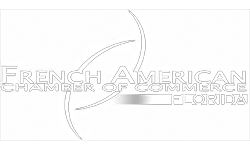One of the most frequent questions we receive as part of our event planning and production efforts is “How much is this going to cost?” In fact, budget is one of the very first conversations we like to have when getting started with a new client or project. Production agencies like VIBE are capable of successfully executing impressive events with nearly any size budget, but how do you know what that budget should be? If your brand only hosts one event a year and there is a specific budget set aside for that event, that makes things a little easier, but we usually suggest a couple of the following strategies for those in the preliminary planning and budget allocation stages of their events.
1. Cost per Person vs. Cost per Acquisition
Most event teams are familiar with the cost per person format ($/pp). It’s an effective way to demonstrate the relationship between the size of the event and the overall budget. But it’s not always the most accurate way to plan a budget. For instance, a venue offering per person pricing may not be including needs like presentation technology, or entertainment, parking, travel transfers, and special décor.
So, always be certain to detail each item in the contract and average the total cost across all expected attendees. When you look at that per person number, is it higher or lower than what it would cost to attract a new client, or is it higher or lower than what that person has the ability to deliver in terms of sales? If the answer is yes, start looking for ways to adjust items in the budget until it has a more balanced ratio.
2. The 50-20-30 Rule
You may have seen this strategy before when it comes to personal finances – the idea is 50% of the budget goes towards necessities, 20% towards savings, and 30% towards lifestyle/pleasure. For events, the concept is largely the same. Allocate 50% towards the venue, essential food & beverage, and any vital technology or production of printed materials, shipping of samples, and the like. Then, set aside 30% for “extras” designed to make your event unforgettable. This may include upgrades to food & beverage, a special entertainer, swag bags, upgraded invitations and décor, and more. Then, leave 20% as contingencies and unforeseen items – such as attendance above expected levels, a cancellation or change to menus or performers, etc.
The 50-20-30 strategy also works exceptionally well for hybrid events. 50% of your budget should go towards content (both live and streamed) which may include presentations as well as entertainment, engagement activities, and a technology platform that unites the experience of in-person and remote guests. 20% of your budget should go towards “hands on” elements of the experience – which include your in-person audience as well as those participating digitally. Finally, 30% of your budget should go towards “production” which would include expert coordination and delivery of digital items as well as venue, décor, and environment considerations for in-person attendees.
3. Sliding Scale
If you don’t like the idea of 50-20-30, you can get more flexibility with a sliding scale budget strategy. With this approach, you identify the key elements of your event that MUST be included. It could be anything, and it may not be the same for each event. You know, for instance, that you’ll definitely need a venue of some kind, just as you know you’ll need some way to communicate with your audience. Perhaps your event will need trophies or awards. Or, maybe you know you need breakout space for training modules. Create a list of these essential categories and then consider what your minimum and maximum spend can be. As you explore different options within each category, you can then adjust other categories accordingly until you arrive at an acceptably balanced budget.
Most importantly, when it comes to budgeting an event, try to keep a long memory. Think about what elements were worth splurging on in the past and which elements underperformed. Be willing to explore new options if it means a better use of your budget, and keep tailoring your unique mix as you go.
About the VIBE Agency: The VIBE Agency is a Miami-based award-winning full-service production agency that specializes in the creation and orchestration of live and virtual experiences for the corporate industry. The agency is forward-thinking and was recognized as one of the 50 top event companies by Special Events magazine in 2019 and 2020. Most recently, Valerie Bihet, founder of the VIBE was named a Smart Women in Meetings 2021 Hall of Fame honoree by Smartmeetings, for her consistent work advancing the industry. If it can’t be live, make it VIBE!









